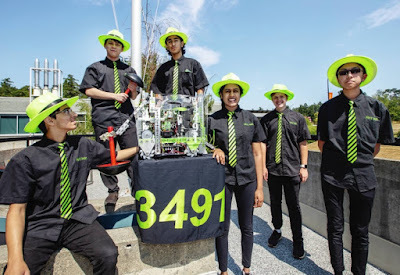An increasing number of Edtech players entering the market provides countless options for educators and students alike. However, with pandemic settling, not all institutes are looking for the most advanced system but simplified digital tools in their classroom, according to Vasudha Mukherjee, works with BW Education.
 |
| Photo: BW Businessworld |
Hybrid learning is not an invention of the pandemic, but rather a
developing concept that was pushed into gear with the crisis. Several
institutes were already integrating technological solutions into their
classes long before the coronavirus pandemic hit. Therefore, it is no
surprise that even when the crisis stabilises not all courses will
return to 100 per cent classroom teaching. It is questions of
percentage, how much will be online, and how much in the classroom.
The Many Forms of the Hybrid Classroom
The
transition to online classes was sudden but did not necessarily pose a
challenge to all higher education institutes. While not all were
prepared to go online full-time, institutes did have some procedures in
place, resources that could be used even in the early days of the
pandemic. Today, there is a multitude of options between online
classrooms, edtech companies, e-Learning platforms and even foreign
collaborations. Needless to say, there are many creative solutions to
the crisis of distance education...
The Teaching Tools
Lenovo solutions are not
only aiming at remote learning students but is enabling IT staff to
evolve cloud-based management system. Lenovo has transformed 360 degrees
of the product-led organisation to solution-led not organisation.
Addressing the most critical needs with the technology-centric
handholding of its customers. It is a smart technology that is evolving
every moment, addressing concerns of all the stakeholders:
- Teacher:
Digital learning has become the new normal and these things are very
important to track, manage and monitor students. Lenovo Smart classroom
uses an intelligence tool to provide high quality digitised content that
reduces the burden of lesson preparation and enhance student
interaction collaboration, easily track, manage ad monitor the
educational content that is displayed to students in an effective
learning management system.
- Student: Students
are always looking for fun, interactive class experiences. Through
Lenovo Smart Classrooms, learning can be an enjoyable experience. With
access to great immersive education content directly on their device,
students can learn from anywhere. AI-based technology helps boost
student confidence by helping them practise English speaking at home.
- IT Admins:
Lenovo SmartClassroom gives a solution and IT admins the power to
optimise operations, ensure compliance, data security and asset
accountability. Furthermore, the institution administration can make
data-driven decisions to manage the curriculum overall in performance
through an intuitive dashboard: What are the software that can and
cannot be used?
- Parents: Information on student
learning progress and class performance is shared with the parent on a
regular basis. Parents also have the authorisation to control
applications on the student device to ensure the physical mental
wellbeing of their child. There has to be a tool that can actually
control and show the contents being searched by children on their
devices.
Mukesh Nihalwani, Sales Head- Pvt Education,
Lenovo India states, “We are in the position to break the digital divide
and involve Education Institute for a bigger IT ecosystem, our hybrid
classrooms are an opportunity for online teaching and learning
revolution.”...
Conclusion
Mukesh Nihalwani says, “We have the tool, but the right tool has to be used in the right manner.”
Regardless
of the pandemic, the hybrid classroom was inevitable for moving
forward, at least in the eyes of some higher educational institutes.
While there are challenges, such as device availability, the mental
health of students, social aspects of learning, etc. most institutes and
tech companies have taken it upon themselves to find the solutions to
make education accessible to everyone. Even though the pandemic has made
hybrid classrooms and blended learning a necessity, the education and
tech industry is quickly catching up to meet the demands.
Read more...
Source: BW Businessworld








































